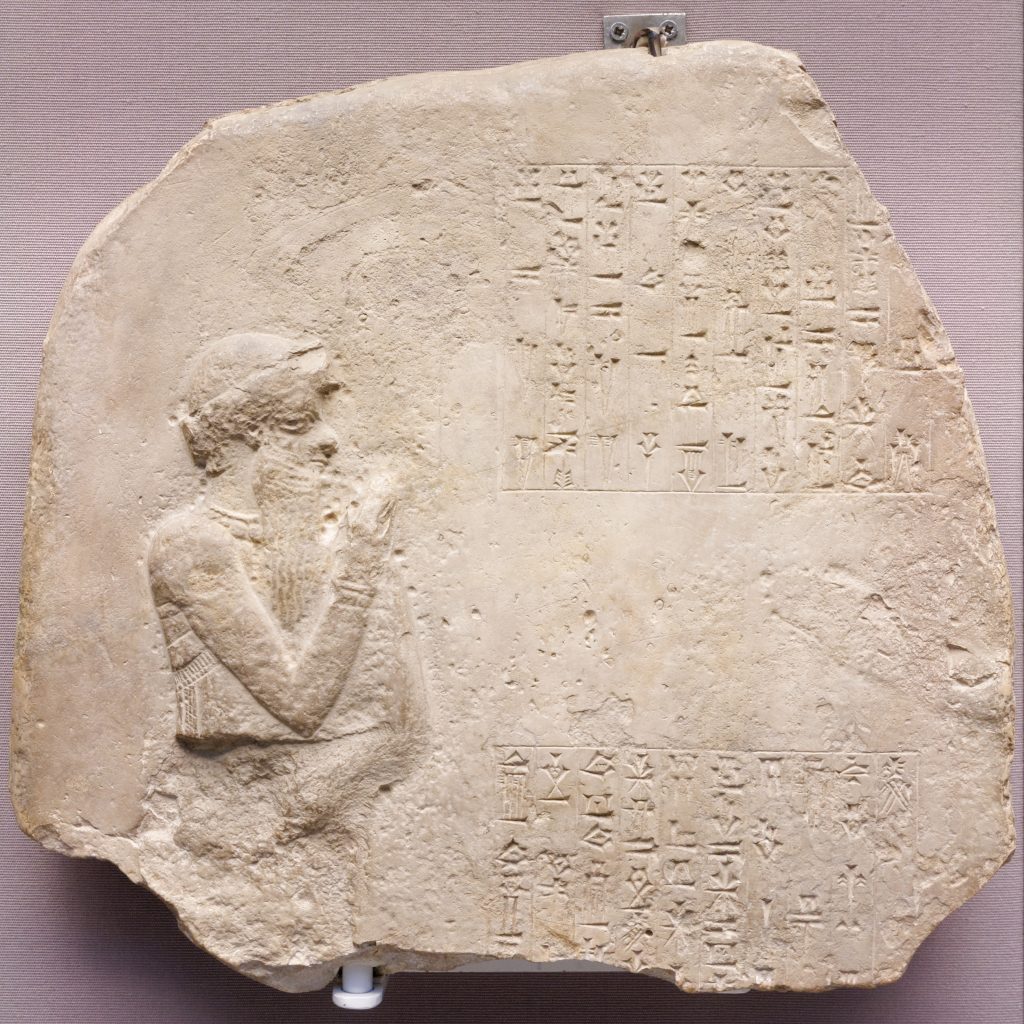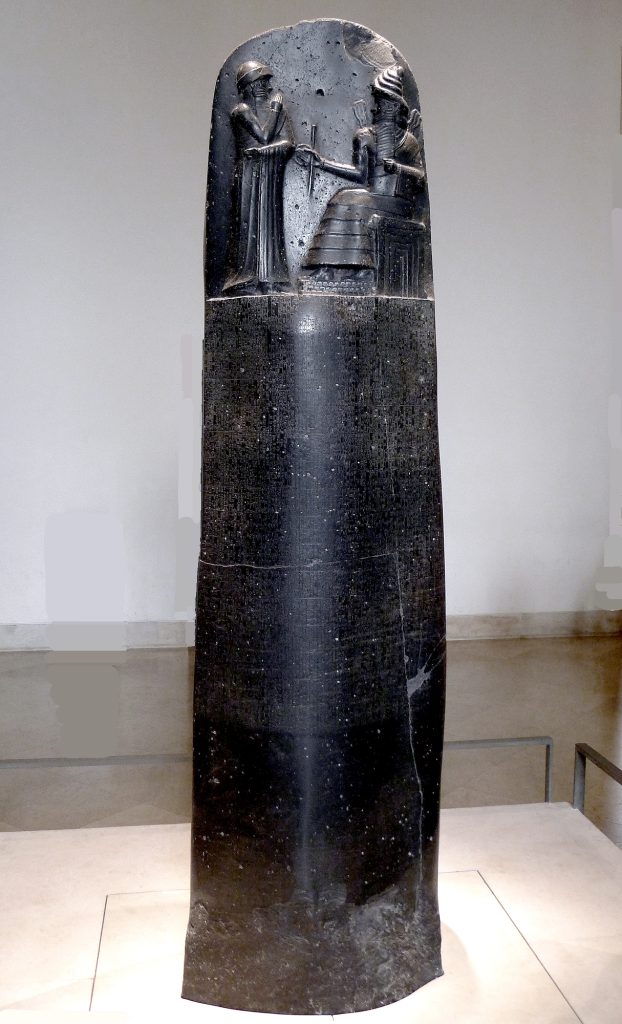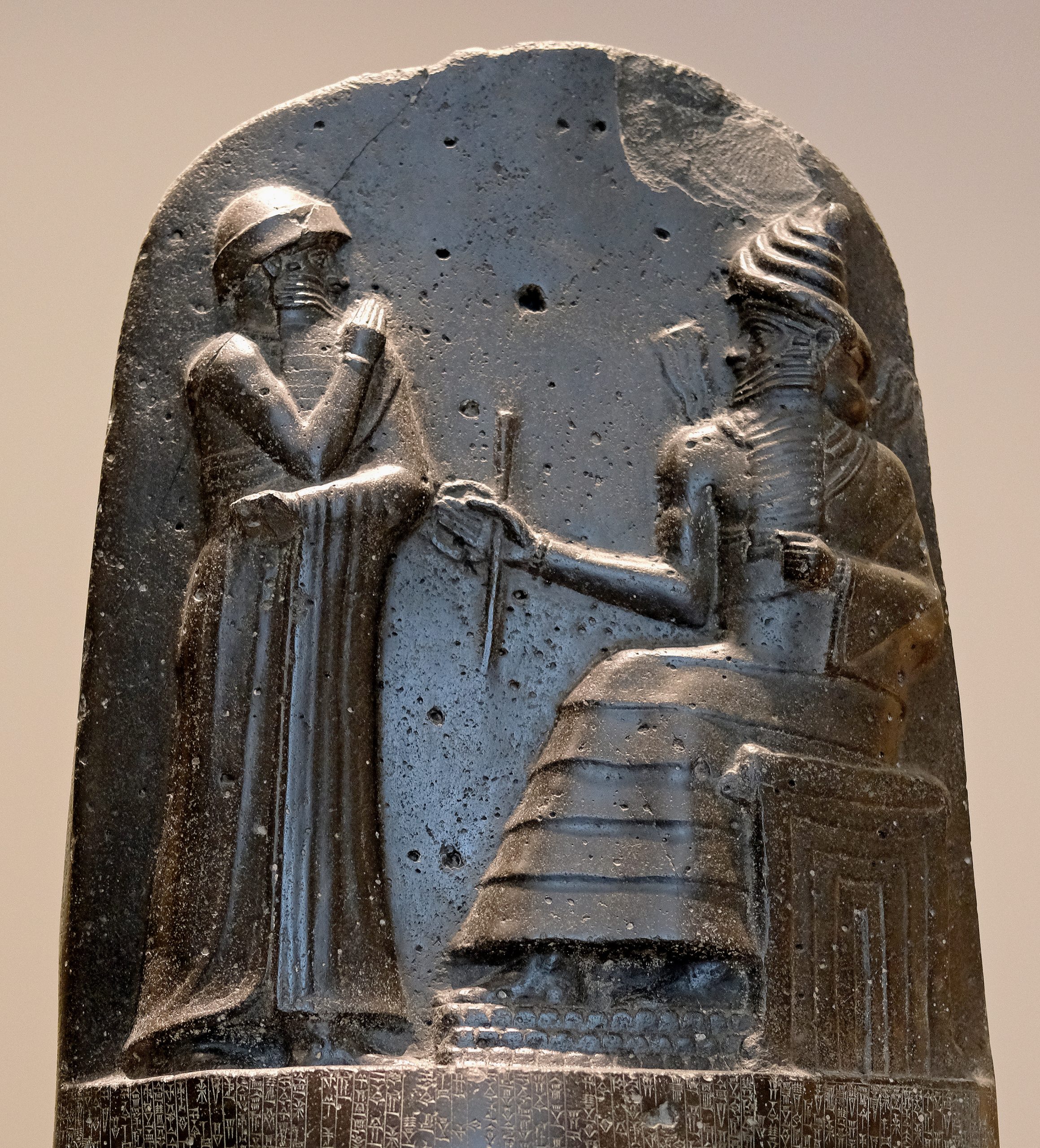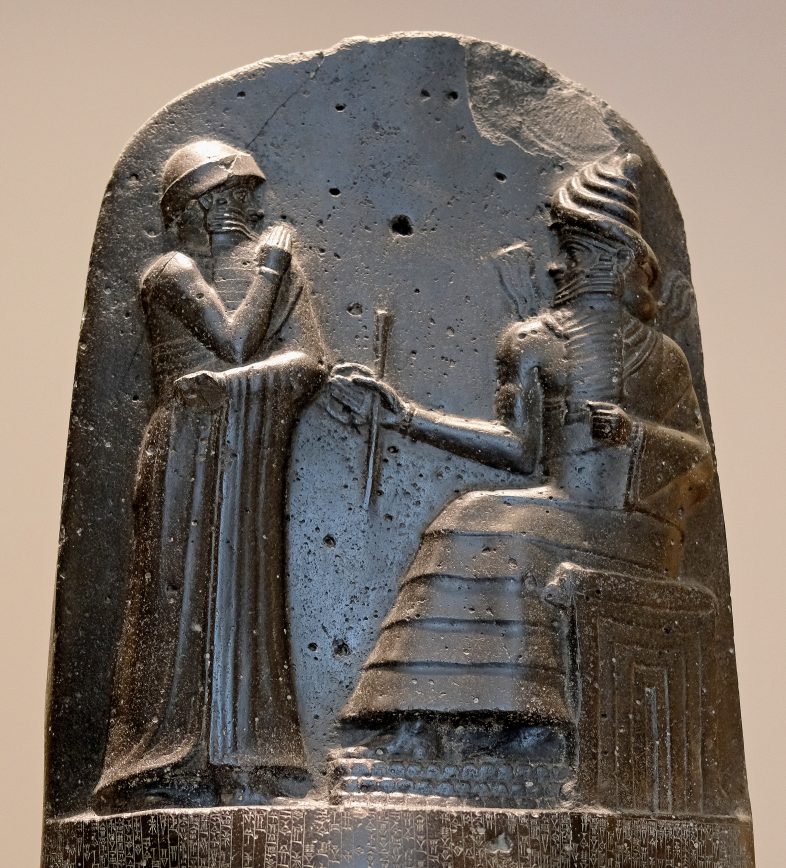
By © Marie-Lan Nguyen / Wikimedia Commons, CC BY 2.5, https://commons.wikimedia.org/w/index.php?curid=23283086

By Mbzt – Own work, CC BY 3.0, https://commons.wikimedia.org/w/index.php?curid=16931676
Hammurabi was an Amorite First Dynasty king of the city-state of Babylon, and inherited the power from his father, Sin-Muballit, in c. 1792 BC.[3] Babylon was one of the many largely Amorite ruled city-states that dotted the central and southern Mesopotamian plains and waged war on each other for control of fertile agricultural land.[4] Though many cultures co-existed in Mesopotamia, Babylonian culture gained a degree of prominence among the literate classes throughout the Middle East under Hammurabi.[5] The kings who came before Hammurabi had founded a relatively minor City State in 1894 BC, which controlled little territory outside of the city itself. Babylon was overshadowed by older, larger, and more powerful kingdoms such as Elam, Assyria, Isin, Eshnunna, and Larsa for a century or so after its founding. However, his father Sin-Muballit had begun to consolidate rule of a small area of south central Mesopotamia under Babylonian hegemony and, by the time of his reign, had conquered the minor city-states of Borsippa, Kish, and Sippar.[5]
Thus Hammurabi ascended to the throne as the king of a minor kingdom in the midst of a complex geopolitical situation. The powerful kingdom of Eshnunna controlled the upper Tigris River while Larsa controlled the river delta. To the east of Mesopotamia lay the powerful kingdom of Elam, which regularly invaded and forced tribute upon the small states of southern Mesopotamia. In northern Mesopotamia, the Assyrian king Shamshi-Adad I, who had already inherited centuries old Assyrian colonies in Asia Minor, had expanded his territory into the Levant and central Mesopotamia,[6] although his untimely death would somewhat fragment his empire.[7] (Wikipedia)

Last modified: May 30, 2023



